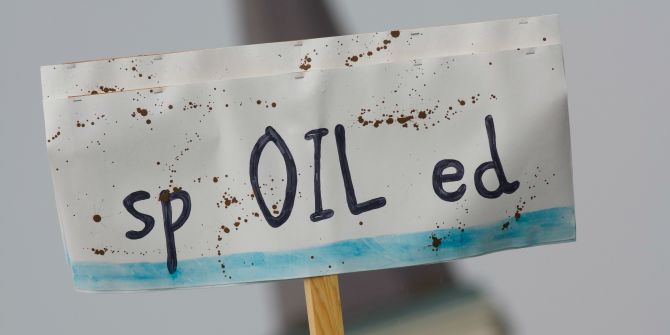 The Arts Council this week announced which arts organisations it would be awarding funding to for the next three years. Under the biggest change to arts funding in a generation, 110 new organisations received funding but 206 lost out completely. Dr Dave O’Brien asks what we can learn from America, reviewing a recent book which details the ways in which the arts are funded via philanthropy across the pond.
The Arts Council this week announced which arts organisations it would be awarding funding to for the next three years. Under the biggest change to arts funding in a generation, 110 new organisations received funding but 206 lost out completely. Dr Dave O’Brien asks what we can learn from America, reviewing a recent book which details the ways in which the arts are funded via philanthropy across the pond.
Good and Plenty: The Creative Success of American Arts Funding. Tyler Cowen. Princeton University Press. 2010.
 How best to support the arts and cultural sector in the UK? There has been extensive discussion of how best to encourage philanthropy, an approach favoured by the coalition. As the USA is often held up as the successful model for philanthropic funding of the arts, a book discussing the American approach, such as Tyler Cowen’s Good and Plenty: The Creative Success of American Arts Funding would seem to offer essential reading to policy makers, practitioners and the general public alike. However, whilst parts of the book identify the great tension between aesthetics and economics, overall the book does not justify its case that the American system of diverse sources of funding, particularly via philanthropy, is the most appropriate way to pay for the arts and cultural sector.
How best to support the arts and cultural sector in the UK? There has been extensive discussion of how best to encourage philanthropy, an approach favoured by the coalition. As the USA is often held up as the successful model for philanthropic funding of the arts, a book discussing the American approach, such as Tyler Cowen’s Good and Plenty: The Creative Success of American Arts Funding would seem to offer essential reading to policy makers, practitioners and the general public alike. However, whilst parts of the book identify the great tension between aesthetics and economics, overall the book does not justify its case that the American system of diverse sources of funding, particularly via philanthropy, is the most appropriate way to pay for the arts and cultural sector.

 Good and Plenty’s discussion of the American model is framed by the contrast between two approaches to arts funding. The first is that of the economist, in the spirit of Jeremy Bentham’s vision of understanding public policy, which has as its aim the maximisation of individual utility. The arts and cultural sector are, in this understanding, equal to all other aspects of life that may generate pleasure for the individual. Distinct from this position is the aesthetic approach, exemplified by Matthew Arnold’s philosophy that culture is the ‘study of perfection’. For Good and Plenty, both sides suggest different ways of funding the arts and cultural sector: for the economist it is up to the market; for the aesthete it is the role of direct subsidy by the state. The book’s summary of these two positions (and the distance between them) should be essential reading for anyone interested in the public funding of arts and culture.
Good and Plenty’s discussion of the American model is framed by the contrast between two approaches to arts funding. The first is that of the economist, in the spirit of Jeremy Bentham’s vision of understanding public policy, which has as its aim the maximisation of individual utility. The arts and cultural sector are, in this understanding, equal to all other aspects of life that may generate pleasure for the individual. Distinct from this position is the aesthetic approach, exemplified by Matthew Arnold’s philosophy that culture is the ‘study of perfection’. For Good and Plenty, both sides suggest different ways of funding the arts and cultural sector: for the economist it is up to the market; for the aesthete it is the role of direct subsidy by the state. The book’s summary of these two positions (and the distance between them) should be essential reading for anyone interested in the public funding of arts and culture.
Where Good and Plenty is at its best is in its discussion of the overall ecology of the arts and cultural sector, drawing explicit links between avant-garde activity and later commercial success. The narrative of experimentation as research and development for the sector is one that has recently gained currency in the UK and is discussed with persuasive force in Cowen’s book.
Good and Plenty suggests the American system finds an appropriate route between the economist and the aesthete to fund a healthy arts and cultural ecology. This contention is, however, where the book is perhaps much less useful. The discussion of the use of indirect subsidy via the taxation system is interesting and informative, but lacks detail and contains some counter intuitive examples that stretch the idea of indirect subsidy too far. For example Cowan suggests that health spending is an indirect subsidy for the arts. However, the idea that the asylum or mental health institution may support the arts, because it removes the need for artists to hold down full time jobs (p54), may make sense to the economist but seems wilfully perverse to those not reading from a neo-classical position.
The book also sets up a straw man of a ‘European’ model of funding, without taking into account the huge diversity of practices across Europe. This straw man of European funding and direct subsidy is never fully explained and therefore never explored in enough detail to be used to contrast to the American model.
Good and Plenty’s third point of discussion, the impact of the Internet on copyright, does not seem to have engaged with the radical transformations occurring as a result of the rise of social media and peer-to-peer technologies. However, futurology is an inexact science, particularly when estimating the impact of technological change on behaviour, so it would be unfair to dismiss Cowen’s text on this point alone.
More importantly, the evidence for success of the American Model, both in the terms of aesthetic excellence and sectoral sustainability is highly questionable. Indeed, a recent paper, for the 2011 State of the Arts Conference, casts doubt on the notion of the American system as one that produces the kind of diverse arts and cultural sector we might wish to find here in the UK, in opposition to Good and Plenty’s rather unclear definition of a successful funding model.
At a point when arts and cultural organisations are considering the ramifications of the Arts Council’s decision of how best to deal with the 29% spending cut in its overall budget, it is vital that the kind of funding system we wish to see for the UK is debated and discussed. Whilst Good and Plenty may help us to understand the debate between economists and aestheticians, and strengthen the case for arts funding as R & D, it does not persuade that the American Model of philanthropy and indirect subsidy is one that should, or indeed could, be transplanted to the UK.
This review was originally published on the LSE British Politics and Policy blog on 3rd April 2011.
——————————————————————————————-
Dave O’Brien is a Lecturer in Cultural Industries at City University London. His work on cultural value includes a recent secondment and report to the UK’s Department for Culture Media and Sport. His work on urban cultural policy can be found in his PhD from the University of Liverpool, which explored the governance of the European Capital of Culture programme and cultural policy in Liverpool and Newcastle Gateshead. He has published several papers on this topic and is currently developing a book on the subject. Read more reviews by Dave.






